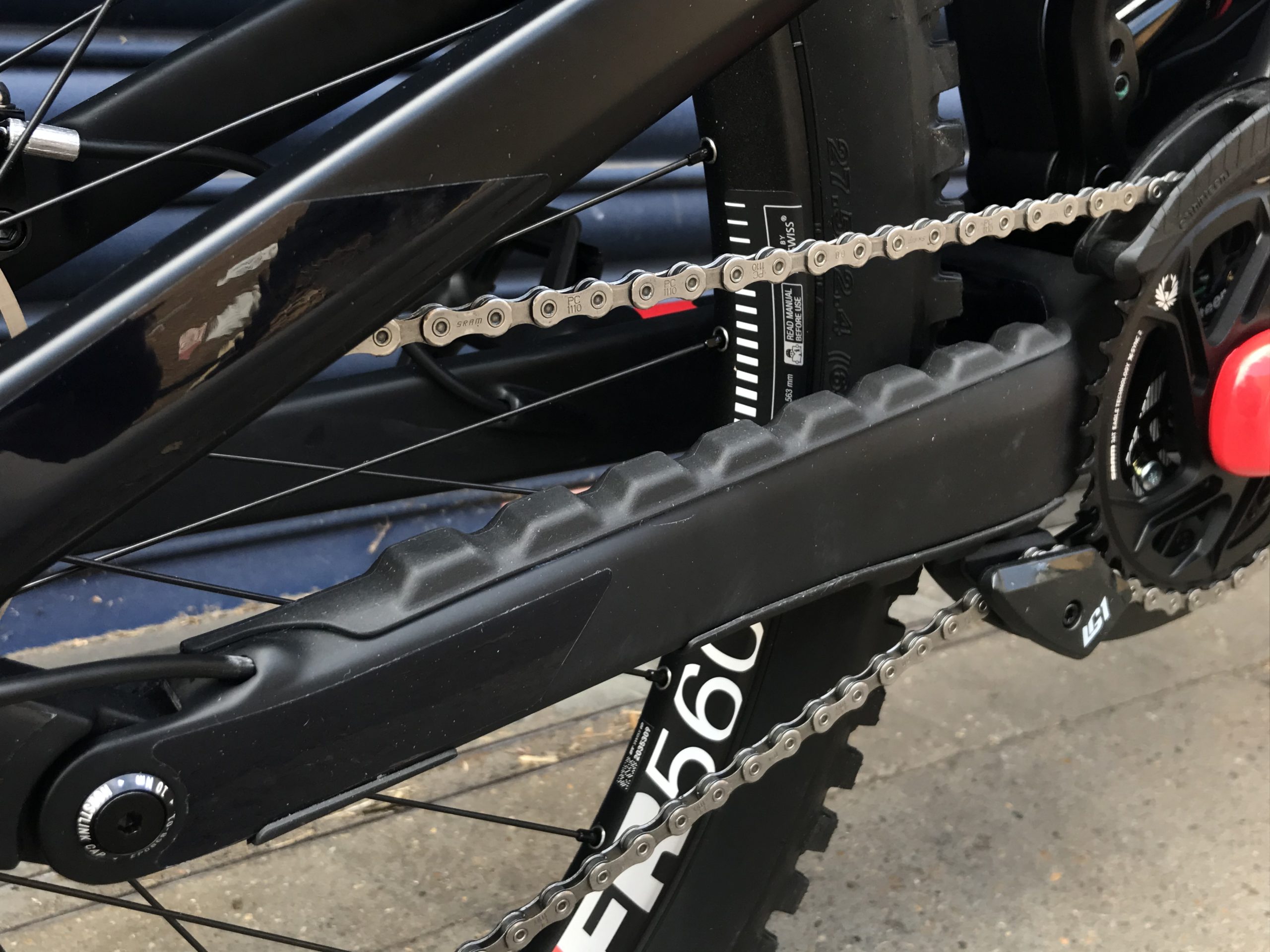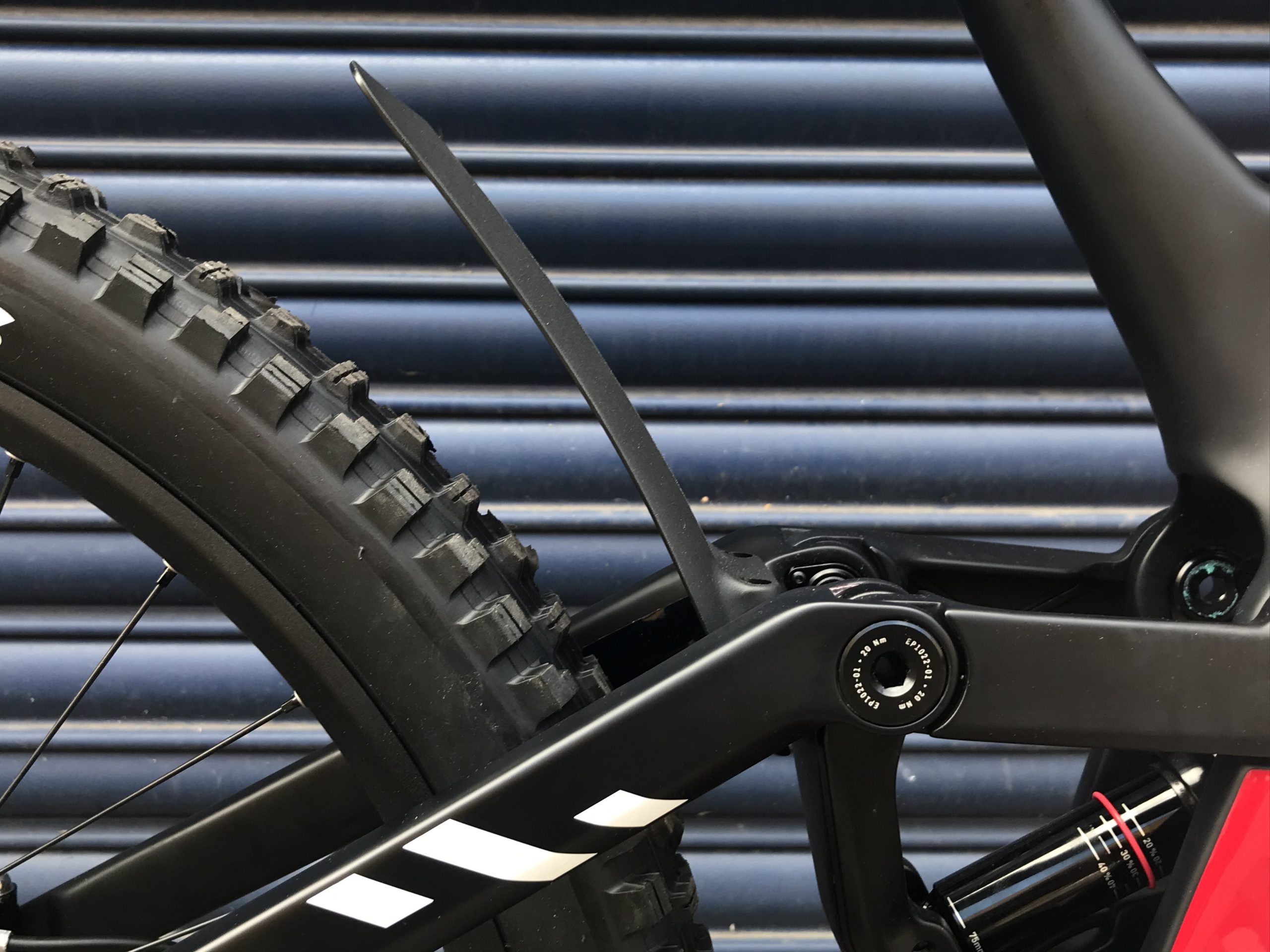New downhill bike from Canyon offers maximum adjustability and gets bigger wheels
With a focus on adjustability, the new Canyon Sender CFR lets you tune reach, wheelbase and chainstay length independently.
>>> Best electric mountain bikes: all you need to know
Canyon Sender CFR need to know
- Size-specific wheels sees the Small and Medium frames getting mixed 29/27.5in wheels and the Large and XL getting 29in wheels front and rear
- Reduced anti-squat gives less pedal kickback on rough sections
- Revised kinematics for added progression and more support whether using air or coil shock
- Pivots have been redesigned with longevity and serviceability a priority
- 600g lighter than the old frame by taking weight out of lower-stress areas and moving to carbon stays
- New shock position lowers centre-of-gravity
- Two model range consists of the CFR at £5,499 and the CFR FMD at £4,449
A versatile chassis that can be optimised to the track and riding style
Canyon’s new DH race bike has been designed to be ‘lighter, more controlled and flat-out faster’ and by making it more adjustable than ever, more riders can dial-in their bike to suit specific race tracks or riding styles. As such the new Sender builds on its predecessor’s variable head angle and chainstay length to let you play with sizing and weight balance.
In addition to the four frame sizes on offer, there are two different head tube inserts each with a different reach measurement. The offset cups simply drop into the frame, so you don’t need a press, and by offsetting the steerer tube bore and making the inserts reversible, the reach can be adjusted by +/- 8mm (in reality it will be slightly less when you factor in the head angle). A second set pair of inserts with zero offset gives an intermediate setting. You’ll have worked out that each frame size has three potential reach measurements before you even start playing around with the height of the dual crowns.
All else being equal, moving the steerer tube will also have a knock-on effect on the wheelbase and the front centre. So won’t that affect the weight distribution and the balance? Well, Canyon has thought of that and also offers two different chainstay positions. This means you can play with the ratio between the front and rear centre and toy with your centre of gravity. Again, this is achieved using reversible alloy frame inserts and the variation is 10mm. At present Canyon doesn’t offer a zero-offset insert that would give an intermediate 5mm mid-point – maybe that’s something that might come further down the line, or it could be an opportunity for a third-party to step in and sell.


Mullet wheels on the smaller sizes, full 29in for larger frames
Although it was possible to run 29in wheels on the old Sender, and some of the Canyon Factory Racing team competed with them, it was never sold in this configuration and, arguably, the BB height was too high with them fitted. It was only possible to use the longer chainstay option too, so only really suited tall riders on the larger frame sizes. That’s all changed on the new Sender, and all models and sizes come with a 29in wheel up front. Smaller sizes get a 27.5in wheel out back for a tighter back end and extra butt clearance. The large and XL frames are full 29ers. Canyon has designed specific stays for each wheel size, so converting the 29er to a mullet bike is not as simple as slotting in a new rear wheel unless you want to risk messing up the BB height. The chainstays are also different lengths, with the large and XL have 445/455mm chainstays and the small and medium get 435/445mm. Interestingly, we’ve found out that 5ft 5in Troy Brosnon will be riding a size Large Sender with 29in wheels front and rear and the -8mm reach adjust cups. We’d have put money on him riding a Medium frame with mullet wheels, but apparently he’s comfortable and fast on the new set-up. Could that be the missing few tenths of a second he needs to get that elusive World Cup win?
New kinematics responds to feedback from team riders
One of the hang-ups of the original Sender was the high level of anti-squat – great for pedalling and support when loading up the bike in high-speed berms, but less desirable when slamming into square-edge bumps. It’s one of the reasons the Canyon engineers started toying around with the Canyon Dis\Connect system. This, if you remember, aimed to let riders completely decouple the drivetrain at the push of a button. Highly complex and potentially fragile, but a trick that could have created the best of both worlds. Whether that project ever produces a production solution remains to be seen, but in the meantime Canyon decided to move the Sender’s bias from pedal efficiency to bump efficiency by reducing both the anti-squat and the pedal kickback. Before deciding on the exact characteristics for the new bike, it tested extensively with a mule on which the main pivot height could be varied. This gave instant ride feedback while keeping all other elements of the bike the same. Where the new has Sender ended up is a configuration that reduced this choking force by around 60 per cent deep in the travel compared to the old bike, and this should mean a smoother ride, less fatigue and more grip in the roughest sections.
In addition, the progression has been increased (team riders have frequently been seen riding custom MX-LInks at World Cup races), and that also brings more support in the middle of the travel. Canyon was up front about the original Sender being optimsed for air shocks, but that additional progression means the new model can be run with either coil or air depending on the track or rider preference.

Emphasis on reliability and serviceability
If you’ve ever taken a close look at Canyon’s trail bikes and enduro bikes, you’ll have seen there’s a methodical approach to concealing pivots and bearings to create a seamless profile. On the Sender, the priority was to build a bike that could be serviced easily by both team mechanics and privateer racers alike. To that end, the Sender comes with double-sealed bearings, replaceable threaded inserts for all the pivot hardware and fully sleeved cable guides. There’s also a full complement of integrated frame protectors to reduce the chance of damage and keep the bike running silently.

Lighter – in the right places
Compared to the original Sender, Canyon claims to have removed over 600g of material from the frame alone. These weight savings were achieved hand-in-hand with the lowering of the frame’s centre of gravity. With the shock now lower and mounted to the down tube, rather than the top tube, all the forces of the shock would be taken care of by the well-built down tube, which meant that wall thicknesses and material could be reduced from the top tube/seat tube area. 300g was saved from the front triangle, bolstered by a 200g saving by switching to a carbon stays. So overall weight is down, but also vital unsprung weight has been removed to ensure the bike has that central mass so vital for high-speed stability and suspension performance.

SRAM/RockShox-equipped Sender CFR, £5,499

How many models in the range?
Just the two, one of which apes the colour and spec of the Canyon Factory Racing team, and the other which is inspired by the bikes ridden by Kaos and Tahnee Seagrave of FMD Racing. The SRAM/RockShox-equipped Sender CFR is £5,499 and the Sender CFR FMD with Fox/Shimano is £4,449. Canyon is not, at present, offering a frame-only or alloy frame – the original Sender will continue to be offered in alloy.
Geometry
Check out the chart above for the published geometry figures. We’ve also measured our own size medium Sender and those figures are as follows:
Head angle: 62.7º
Seat angle: 59.9º
Wheelbase: 1,273mm
Front centre: 828mm
Chainstay: 445mm (long setting)
BB height: 348mm
Down tube: 740mm
Reach: 461mm (0 offset cup)
Weight: 15.03kg (33.13lb)








